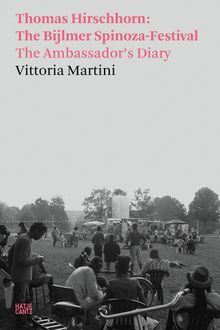ARTIST MONOGRAPHS
|
|
in stock $32.00 Free Shipping UPS GROUND IN THE CONTINENTAL U.S. |
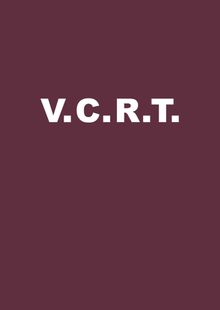 Thomas Hirschhorn: V.C.R.T.
Thomas Hirschhorn: V.C.R.T.
Published by La Fábrica / Bombas Gens Centre d'Art.
This beautifully designed 400-page volume compiles writings by Swiss artist Thomas Hirschhorn (born 1957) from the start of his career to the present, arranged chronologically.
PUBLISHER
La Fábrica / Bombas Gens Centre d'Art
BOOK FORMAT
Paperback, 8.5 x 11.75 in. / 400 pgs / 400 bw.
PUBLISHING STATUS
Pub Date 10/18/2022
Active
DISTRIBUTION
D.A.P. Exclusive
Catalog: SPRING 2022 p. 181
PRODUCT DETAILS
ISBN 9788417769970 FLAT40
List Price: $45.00 CAD $61.00 GBP £41.00
AVAILABILITY
In stock
in stock $45.00 Free Shipping UPS GROUND IN THE CONTINENTAL U.S. |
 Thomas Hirschhorn: Robert Walser-Sculpture
Thomas Hirschhorn: Robert Walser-Sculpture
Published by Hatje Cantz.
Edited with text by Kathleen Buhler. Text by Ann Cotten, Marcus Steinweg, et al.
For three months, the Swiss city of Biel hosted a temporary “sculpture” by Thomas Hirschhorn (born 1957), honoring novelist Robert Walser. Hirschhorn and curator Kathleen Bühler offered readings, walking tours, lectures and children’s activities, all of which comprise the “sculpture.
PUBLISHER
Hatje Cantz
BOOK FORMAT
Hardcover, 8.5 x 11 in. / 800 pgs / 1000 color.
PUBLISHING STATUS
Pub Date 8/11/2020
Active
DISTRIBUTION
D.A.P. Exclusive
Catalog: SPRING 2020 p. 177
PRODUCT DETAILS
ISBN 9783775746809 FLAT40
List Price: $75.00 CAD $108.00
AVAILABILITY
Out of stock
STATUS: Out of stock Temporarily out of stock pending additional inventory. |
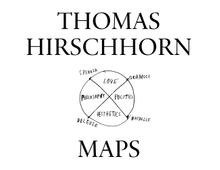 Thomas Hirschhorn: Maps
Thomas Hirschhorn: Maps
Published by JRP|Ringier.
Edited by Clément Dirié, Julie Enckell Julliard. Text by Thomas Hirschhorn, Julie Enckell Julliard, Marcus Steinweg.
Bringing together 15 Maps realized between 2003 and 2016 by Swiss artist Thomas Hirschhorn (born 1957), this book focuses on this particular aspect of his practice that could be seen as a matrix to understand his unique position within the art world and visual culture. As he explains: “With my Maps, I want to make clear I have a goal, that I am also a maker, and not only a thinker.” Edited by Julie Enckell Julliard, the publication reproduces each Map in detail, showing their combination of printed matter, text fragments, artist's comments and collaged press images. Acting as an archive of projects, Hirschhorn's Maps are simultaneously tools to clarify his thinking, memorials to inspirational figures, manifestos about topics such as “Friendship Bewtween Art and Philosophy,” as well as a way to resist. Published all together, they provide a remarkable insight into the uncompromising art Hirschhorn has been building consistently for 30 years.
PUBLISHER
JRP|Ringier
BOOK FORMAT
Hardcover, 9 x 11.75 in. / 140 pgs / 80 color.
PUBLISHING STATUS
Pub Date 2/19/2019
Active
DISTRIBUTION
D.A.P. Exclusive
Catalog: SPRING 2018 p. 173
PRODUCT DETAILS
ISBN 9783037644904 TRADE
List Price: $39.95 CAD $53.95 GBP £26.00
AVAILABILITY
In stock
in stock $39.95 Free Shipping UPS GROUND IN THE CONTINENTAL U.S. |
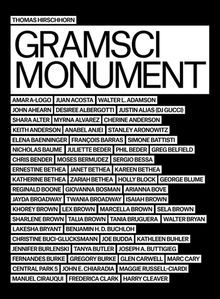 Thomas Hirschhorn: Gramsci Monument
Thomas Hirschhorn: Gramsci Monument
Published by Walther König, Köln/DIA.
PUBLISHER
Walther König, Köln/DIA
BOOK FORMAT
Paperback, 7.75 x 10 in. / 464 pgs / illustrated throughout.
PUBLISHING STATUS
Pub Date 7/28/2015
Active
DISTRIBUTION
D.A.P. Exclusive
Catalog: SPRING 2015 p. 183
PRODUCT DETAILS
ISBN 9783863356118 FLAT40
List Price: $55.00 CAD $72.50
AVAILABILITY
In stock
in stock $55.00 Free Shipping UPS GROUND IN THE CONTINENTAL U.S. |
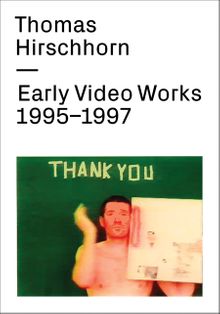 Thomas Hirschhorn: Early Video Works 1995-1997
Thomas Hirschhorn: Early Video Works 1995-1997
Published by JRP|Ringier.
Edited by Stéphanie Moisdon. Text by Thomas Hirschhorn.
PUBLISHER
JRP|Ringier
BOOK FORMAT
DVD (PAL/SECAM), 5.25 x 7.5 in.
PUBLISHING STATUS
Pub Date 4/30/2013
Active
DISTRIBUTION
D.A.P. Exclusive
Catalog: SPRING 2013 p. 183
PRODUCT DETAILS
ISBN 9783037643020 TRADE
List Price: $35.00 CAD $47.50 GBP £14.17
AVAILABILITY
In stock
in stock $35.00 Free Shipping UPS GROUND IN THE CONTINENTAL U.S. |
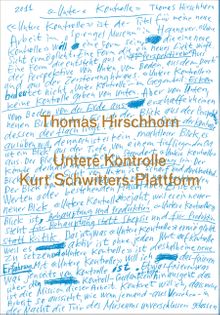 Thomas Hirschhorn: Kurt-Schwitters-Plattform
Thomas Hirschhorn: Kurt-Schwitters-Plattform
Untere Kontrolle
Published by Walther König, Köln.
Foreword and text by Carina Plath. Text by Michael Diers.
PUBLISHER
Walther König, Köln
BOOK FORMAT
Paperback, 9 x 13 in. / 64 pgs / 45 color.
PUBLISHING STATUS
Pub Date 8/31/2012
Active
DISTRIBUTION
D.A.P. Exclusive
Catalog: FALL 2012 p. 163
PRODUCT DETAILS
ISBN 9783863351120 FLAT40
List Price: $35.00 CAD $47.50
AVAILABILITY
In stock
in stock $35.00 Free Shipping UPS GROUND IN THE CONTINENTAL U.S. |
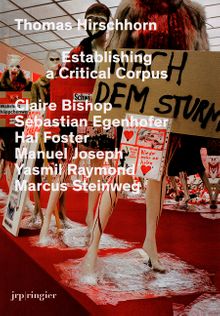 Thomas Hirschhorn: Establishing a Critical Corpus
Thomas Hirschhorn: Establishing a Critical Corpus
Published by JRP|Ringier.
Edited by Thomas Bizzarri, Thomas Hirschhorn. Text by Claire Bishop, Hal Foster, Yasmil Raymond.
PUBLISHER
JRP|Ringier
BOOK FORMAT
Hardcover, 7 x 10.25 in. / 365 pgs / 180 color.
PUBLISHING STATUS
Pub Date 9/30/2011
Active
DISTRIBUTION
D.A.P. Exclusive
Catalog: FALL 2011 p. 159
PRODUCT DETAILS
ISBN 9783037641859 TRADE
List Price: $44.95 CAD $60.00 GBP £23.00
AVAILABILITY
Out of stock
STATUS: Out of stock Temporarily out of stock pending additional inventory. |
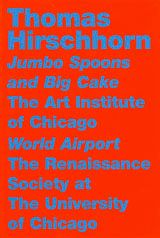 Thomas Hirschhorn
Thomas Hirschhorn
Published by The Art Institute of Chicago/The Renaissance Society of the Unversity of Chicago.
Essays by Okwui Enwezor, James Rondeau, Hamsa Walker.
PUBLISHER
The Art Institute of Chicago/The Renaissance Society of the Unversity of Chicago
BOOK FORMAT
Hardcover, 8.5 x 11 in. / 64 pgs / 60 color / 20 bw
PUBLISHING STATUS
Pub Date 5/2/2000
No longer our product
DISTRIBUTION
D.A.P. Exclusive
Catalog: SPRING 2000
PRODUCT DETAILS
ISBN 9780865591813 TRADE
List Price: $19.95 CAD $25.00
AVAILABILITY
